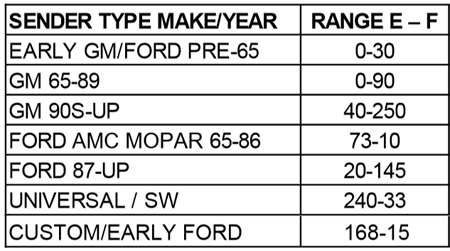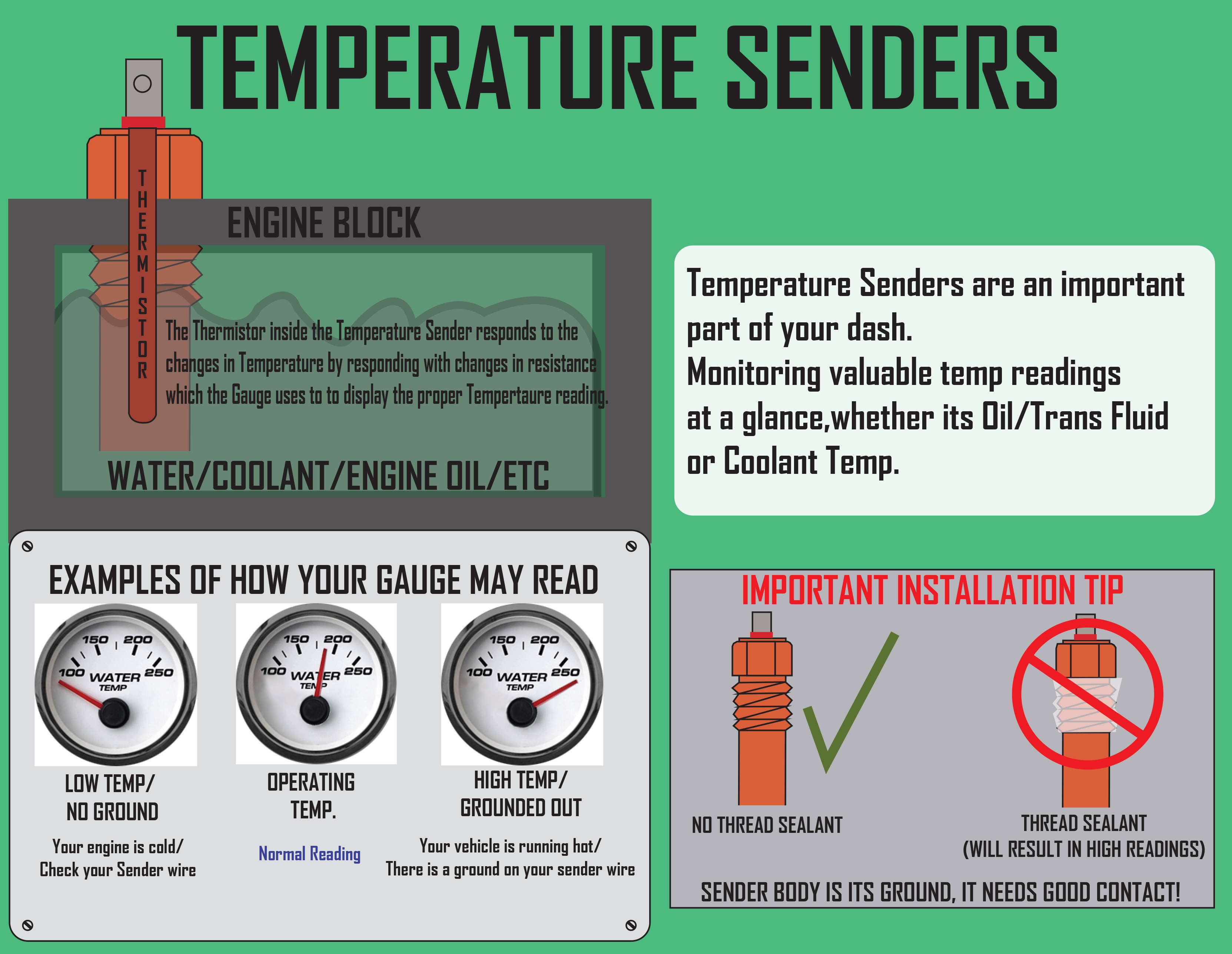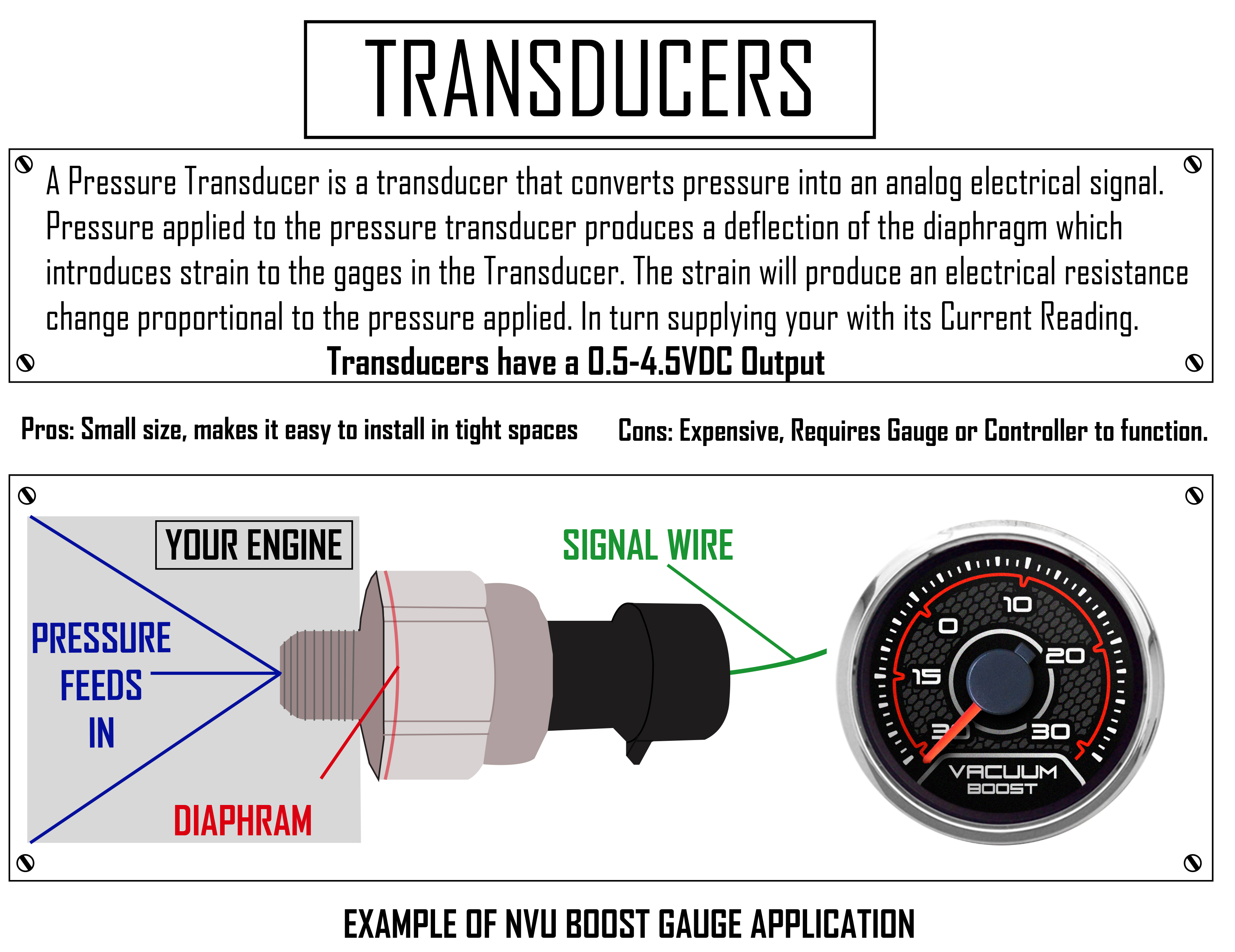All About Senders
NVU Tech Team on 29th Apr 2019

Lets discuss the necessary senders required to use NVU Gauges.
Each NVU Gauge uses a different sender depending on its function.
For Example: Your programmable Speedometer uses a Vehicle Speed Sender to feed a 12V+ square wave signal to the gauge to make it read your current speed. While on the other hand your Fuel Gauge works off the resistance level in the tank based off of the position of the fuel tank float.
Fuel Level Senders
The Fuel level Senders will come in different shapes and size based on application and vary widely in terms of OHM range and are vital to an accurate Fuel Gauge reading.

Making sure your gauge and sender share the same Ohm range is the single most important part of having your Fuel Gauge reading correctly! The range will vary from sender to sender and OEs use a different range for each make. Below is a chart of various fuel sender ranges used by different manufacturers.


VSS or Vehicle Speed Sender
More information on Speed Senders
The Vehicle Speed Sender or VSS is an electronic device that translates rotations of the transmission into a signal
the Speedometer can use to display your current vehicle speed accurately.
There are generally 2 types of speed signals, AC sinewave and Hall Effect. While there are only 2 types, they can be in different shapes and locations. See the images below to help identify the parts.
Screw-on speed senders: These are used in older transmissions which have a cable drive for spinning a mechanical speedometer. These units replace the cable entirely and are relatively inexpensive. A gear in the transmission engages the drive tang on the sender (generally .104"x.104") and spins the sender to create a signal. Why not just use a mechanical cable style? Calibration is the answer. To calibrate a cable-style speedometer the gear drive in the transmission must be changed. While not difficult, it does take time and trial and error. GM and Ford style are most common, VW are available from time to time. These can either be hall effect (3-wire) or AC sinewave (2-wire). NVU manufactures these units for use in aftermarket vehicles that may need this type of drive.
Integrated: This bolts onto the transmission or pickup area over a toothed wheel often referred to as a reluctor ring or wheel. This type is installed at the factory and if it requires replacement it will need the factory part. These can either be hall effect or AC sinewave.

(GM HALL EFFECT) Outputs 16,000 PPM

(FORD/TREMEC HALL EFFECT) Outputs 16,000 PPM

(NVU GPS SENDER) Outputs 16,000 PPM
No matter which VSS you have NVU gauges will be able to get you on the road reading the correct speed!
Temperature Senders
The Temperature Sender works by translating the temperature changes via resistance changes when the temperature rises or falls. NVU uses one temperature sender for all temperature readings. This is referred to as a "Hi-Match" sender.



Pressure Senders


Transducer Senders
(Requires ECU/PCM or Controller in order to operate)


We have now covered the senders and their functionality as well as the way they send their signals to the Gauge.
Each sender style has its own advantages and disadvantages. Each has their own limitations and no one is better that the other in many respects. It all comes down to what has the functions and features the end user desires and what the application may be.

